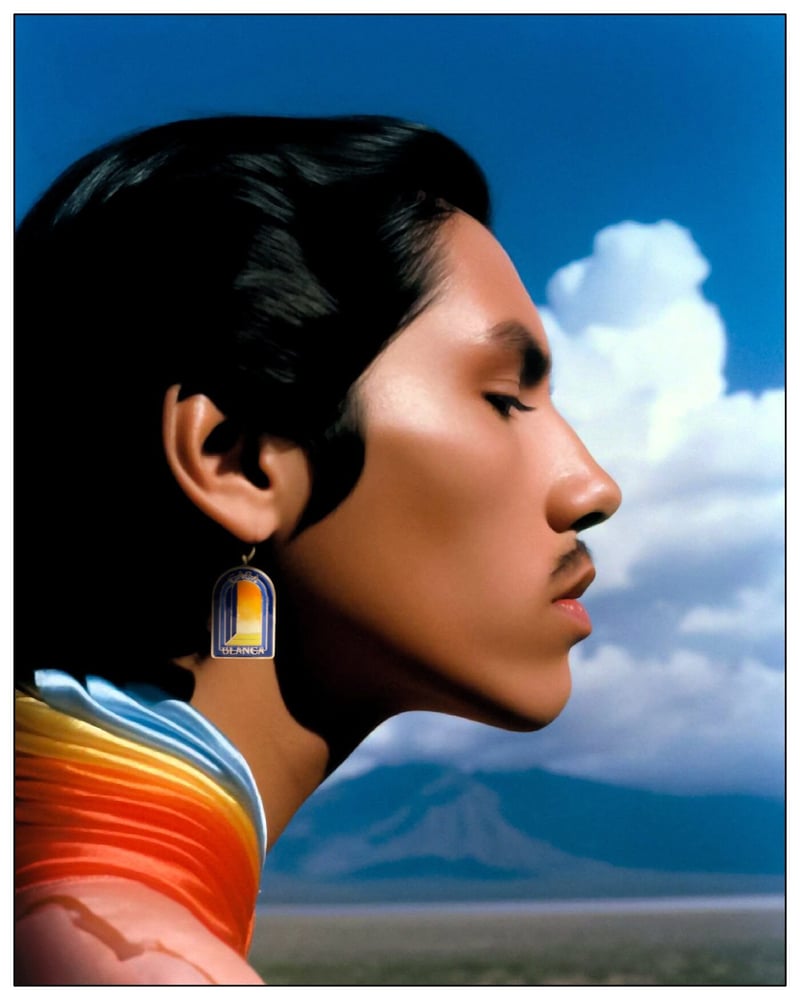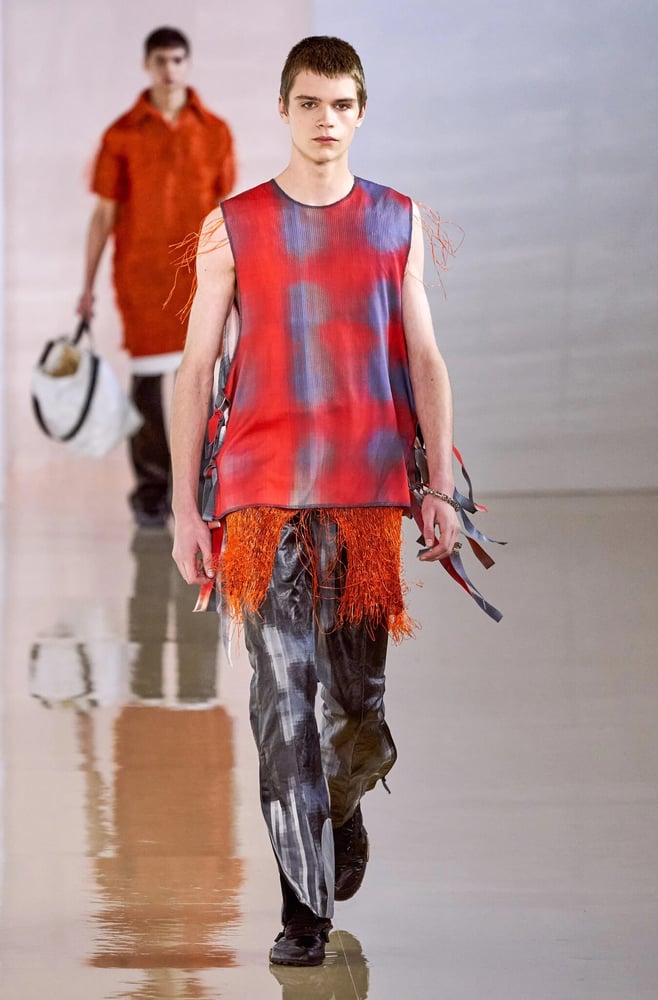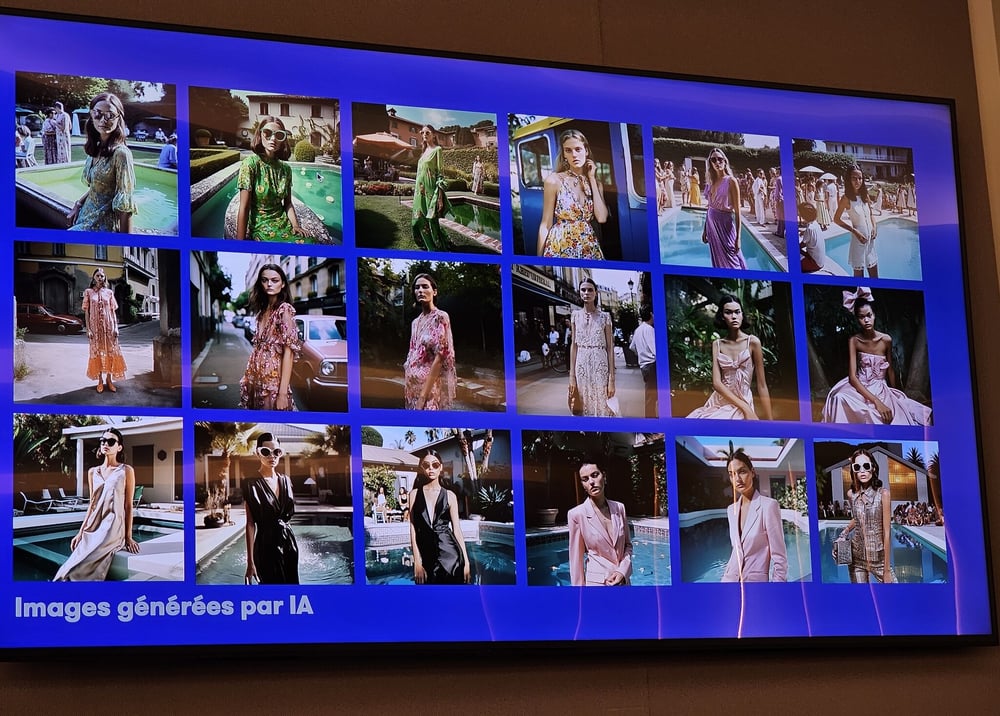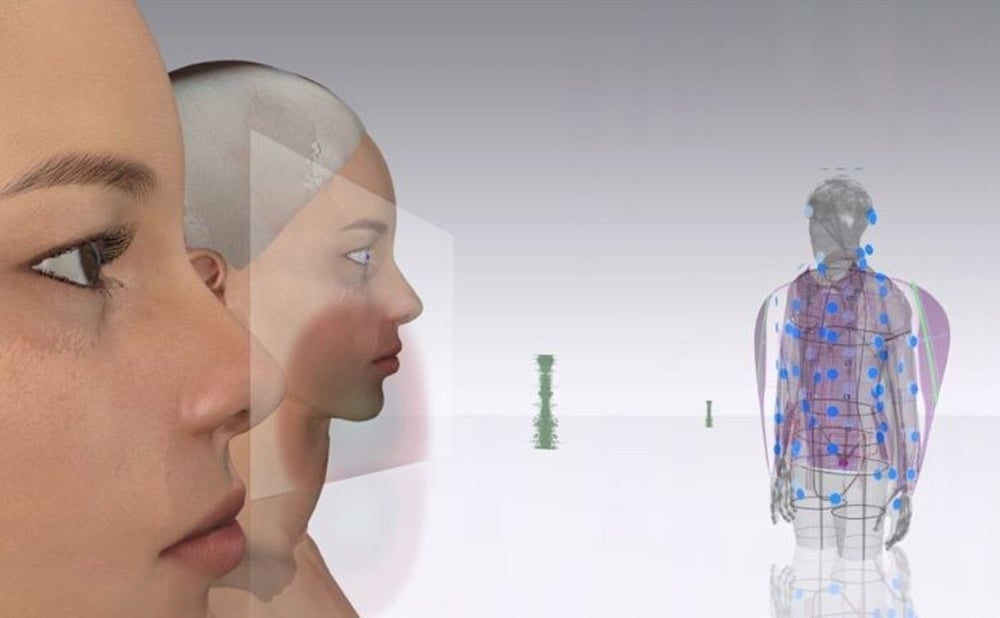Luxury and AI: what opportunities for fashion designers?
“A year ago, fashion labels simply swore by the metaverse and NFTs. They’re now talking far less about either, and are instead increasingly thinking about artificial intelligence (AI). We’re on the threshold of a paradigm shift,” said Frédéric Rose, president and founder of Imki, a start-up specialised in generative AI, speaking in July at a conference organised in central Paris by French public investment bank Bpifrance. In just a few months, ever since ChatGPT emerged in the public sphere, AI has become a focus of huge attention by the fashion and luxury industries, which consider it an application with limitless possibilities, especially with regards to the creative process.

In the last six months, with the likes of ChatGPT, Lensa AI, Midjourney, Stable Diffusion and Dall-E entering the scene, so-called generative AI software has exploded. Several labels have tapped this trend, though so far they have limited themselves to using these applications chiefly for communication purposes. For example, the Casablanca Paris label, whose latest Spring/Summer 2023 campaign featured images created by British photographer Luke Nugent using AI tools.
A few luxury labels have experimented with AI, like Gucci, which has launched several projects with digital artists, and Valentino, which gave algorithms, and German artist Mario Klingemann, the job of producing the video showcasing its Spring/Summer 2021 haute couture collection. More recently, some labels used AI as a gimmick to heighten the impact of the presentations of their latest summer collections, seeking to attract attention and sharpen their brand image.
AI tools have actually been utilised in the fashion industry for about 10 years. “The first adoption wave came between 2013 and 2019. Initially, as a marketing segmentation tool, relying chiefly on image recognition solutions, which enable fashion labels for example to categorise millions of their competitors’ products. The other use is essentially predictive. By analysing a product's past sales results [through AI], we can predict demand and inventory trends, and refine prices,” said Paul Mouginot, AI artist and engineer. He co-founded Daco.io, a competition intelligence tool that was acquired in 2018 by Veepee, and the Stabler.tech start-up, which operates in the data mining sector. He also set up aurèce vettier, an art studio that combines AI algorithms and craftsmanship skills.
In 2014, a new family of algorithms appeared, called generative adversarial networks (GANs). They are a class of machine learning frameworks that give creative capabilities to AI, enabling the software to imitate images. By collecting data and images on a large scale, it is possible to build datasets that can then be used to train these networks. Once trained, they can create images from scratch using keyword prompts. “AI responds to a brief, generating the most appropriate answer. But it will never be able to anticipate or capture a directional trend, nor to manage emotion," said Rose.
Though the technology exists, there are two major barriers to its use. “There is still a data quality issue, related to the way in which data is retrieved, and therefore a data management problem. The other barrier relates to data mining, which is becoming an increasingly political issue,” said Mouginot. He mentioned that, until recently, deploying data mining technology required scores of developers and resources, whereas more affordably priced interfaces are now becoming available. “What’s new is that we have made these platforms accessible to everyone,” he added.
While they are used to optimise product industrialisation as well as sales and the customer experience, AI tools are instead relatively untapped with regards to the design process. So far, very few labels have gone down this road, with a handful of exceptions, for example Acne Studios. In 2020, the Swedish label created its Fall/Winter 2020-21 men’s collection, in collaboration with artist Robbie Barrat, starting from machine-designed items in what was then a highly experimental approach. “Since the machine only processed Acne Studios photos, the result looked extremely familiar. It’s our world, but in another galaxy. I’m especially pleased with the way AI taught us to look at clothes, with a different gaze, without prejudice,” said the label’s Creative Director Jonny Johansson, interviewed at the time by Sabato, the magazine supplement of Belgian daily paper L'Echo.

Then, the Covid-19 pandemic gave a boost to digitalisation, and AI technology improved further. “AI tools have always been there, but it was very hard to interact with them. The current revolution lies in AI’s ability to interact and generate content that goes beyond human limitations. Nowadays, we can create a text with a specific meaning, or an image, by using generative AI. A Fine Arts degree is no longer needed! We simply have to be gifted in giving prompts, in other words have the ability to describe precisely what we want, and AI will do the job for us,” said Rose.
Endless iterations
“The main challenge is having a quality database. When the datasets are clean, there are countless applications for the luxury industry, especially in terms of manufacturing and lead times. AI will make it possible to significantly speed up the design process, creating collections much more rapidly than we do now. By tapping into unlimited seams of data, AI can generate endless new iterations in just a few hours, with printed patterns too. It will increase creative capabilities tenfold,” said Nicolas Flaud, head of business development in fashion and luxury at Imki.
For Clarisse Reille, managing director of the French Institute for Textiles and Apparel (IFTH), “applications like these, by creating much broader, more extensive moodboards, will amp up creativity, driving designers, especially those with vision and conviction, towards excellence. Once designers will get stuck in, none of them will be able to avoid having more inspiration.” Reille added that “a new creative field is opening up, as photography did in its time. Then, people feared that it would spell the end of painting. Actually, the invention of photography pushed painting in a new direction.”
Entirely unconstrained by the rules of fabric weaving and garment construction, and only stimulated by images, AI software generates new designs without restrictions, with undeniably refreshing results.
“By giving access to a host of creative solutions, AI will primarily give labels and designers the luxury of choice, in an era when the pace has become so much faster. It will provide some breathing space, and save time. From a practical point of view, this will enable the industry to reduce instances of cultural appropriation, drawing inspiration from unique items from the four corners of the world without copying them, but featuring only their distilled essence. Besides, AI will also be a help to productivity, while generating interesting ideas by accessing new forms and concepts and pushing its own boundaries,” said Mouginot.

The range of possibilities is huge. As Flaud pointed out, “generative AI applications will for example allow brands to test their collections with their employees, retailers and even customers, before starting production. They will save significant time, as well as money, because they’ll avoid overproducing. Not to mention that, by developing garment models more rapidly, they’ll be able to react faster and fit with current trends.”
Generative AI is indeed beginning to be perceived by companies as a potential growth driver. In a recent study by Boston Consulting Group for Altagamma, 45% of the executives surveyed said ChatGPT had prompted them to increase their AI investments, and 67% of senior executives said they wanted to prioritise generative AI.
Will AI lead to overproduction?
However, this widespread enthusiasm needs to be dampened somewhat. Rather than reducing output, AI risks instead of fuelling overproduction, as already demonstrated by some fast-fashion players. A consideration that ought not to apply to the luxury industry, although clearly, the opportunity of creating collections more quickly could be conducive to overproduction, with a likely surfeit of capsule collections launched on the market.
Another issue, one rarely mentioned by AI advocates, is the environmental footprint of digital technology, already a heavy consumer of energy. Large-scale use of generative AI will only increase the sector’s energy consumption. Reille also noted that “there is the risk of manipulations, as this type of open-sourced tool could potentially multiply instances of bias.”
Another practical aspect to bear in mind is that AI-generated images cannot be directly passed on to the manufacturing line. “Currently, the issue with AI-generated images is that they are two-dimensional. Designers and model-makers, who are knowledgeable about fabrics and patterning, must find a way around this. But in two years, solutions will be found,” said Reille. “In the near future, with 3D modelling, it’ll be possible to generate entirely original shapes, notably via neural radiance field (NeRF) algorithms,” said Mouginot.
Some fashion labels are already working to combine AI tools, and their speed of execution, with the 3D modelling techniques that have been in use for some years. This will enable designers to generate highly realistic renderings, also in terms of how fabrics drop, and to visualise products before making a prototype. AiDLab, a first platform integrating AI and 3D design, was set up in Hong Kong in late 2021. It was created by the Hong Kong Polytechnic University and the Royal College of Art, and it has developed the AiDa software, currently being tested by fashion students.

Finally, a crucial issue related to generative AI is that of intellectual property. “Safeguarding data is a genuine challenge for digital data owners, because everything they give over to AI applications to feed them is then churned out by them. This raises the issue of copyright. Brands that use AI must absolutely protect their data and their creations,” said Rose, who noted that “most luxury houses have understood this, because their staff are forbidden from using existing web-based AI applications.”
Reille was on the same wavelength, suggesting labels should develop “applications entirely specific to [them], creating their own AI tools with proprietary datasets reflecting their world and heritage. This type of tool must be their property.”
Mouginot said that “the important thing is to be able to customise AI models to fit each label's brand narrative. This will make it possible to train [AI tools] in a more sophisticated, precise fashion, based on each label's DNA.” He also encouraged labels “to get on it pretty sharpish.” “This is going to be truly transformative. It’s essential that companies come to grips with this technology, because it's coming. It's a little like the advent of the internet. Many, especially luxury labels, were wary at the time. But the first that went digital are still benefiting from a competitive advantage,” concluded Reille.
The only problem is the shortage of expert AI and 3D design talent in the fashion industry. Academies are only now starting to launch specific courses.
Copyright © 2023 FashionNetwork.com All rights reserved.



